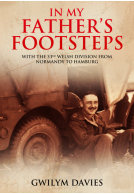Death On the Hellships (Hardback)
Imprint: Pen & Sword Military
Pages: 356
ISBN: 9780850528213
Published: 1st August 2001
Last Released: 1st August 2007
(click here for international delivery rates)
Order within the next 10 hours, 31 minutes to get your order processed the next working day!
Need a currency converter? Check XE.com for live rates
This detailed chronicle of the Japanese treatment of POWs during World War II reveals the true dimensions of the Allied POW experience at sea. Gregory Michno draws on American, British, Australian and Dutch POW accounts as well as Japanese convoy histories, recently declassified radio intelligence reports, and a wealth of archival sources to present for the first time a detailed picture of what happened. His findings are startling.
By December 1942 even the Japanese High Command was becoming alarmed at the number of lives lost aboard the notorious Hellships. And the worst was yet to come. Despite this, the experience of Allied prisoners at sea has previously received quite limited attention, in the form of sections or single chapters dealing with the subject as a kind of ominous prelude to more familiar events in 0ccupied territories. Now, American historian Gregory Michno redresses the balance, presenting what is possibly the first full-length treatment of this important subject. Drawing upon numerous American, Australian, British and Dutch accounts from survivors, some of which have only recently emerged. He shines a light into the dark world of these vessels in a sustained ands determined attempt to bring out the truth about what were literally matters of life and death for the 126,000 people who had the misfortune of being forced to sail in them. The death toll is shown to be shockingly high, higher, in fact, than any previous research has suggested, and this leads into a discussion of challenging questions about so-called 'Friendly Fire', which the author faces, squarely. How effective was code-breaking and radio intelligence at that time? Did it justify General MacArthur's optimistic interpretation? Were the Allies aware of the POW presence aboard these ships and, if so, what was the extent of that knowledge? How did it impact upon operational decisions?
Stephanie A. Jefford
0n another level, he explores the Japanese mindset and considers how it came to pass that Japan, which had as late as 1929 shown a willingness to sign the accords to the Geneva Convention, should so recklessly have disregarded the laws and customs of war by giving free rein to men like the brutal Niimori.
Insights are provided into human behaviour in extremity, below decks, with prisoners demonstrating extraordinary ingenuity and improvisation in the treating of ailments and on one ship, developing a decidedly odd form of racket (see 197; 243). Michno also scrutinises two quite distinct disasters at sea, the atrocities involved in the Suez Maru Incident and the tragic error in the loss of the Awa Maru (133-139; 268-269).
For anyone seeking to know more about this hitherto neglected area, it would be difficult to think of a better place to start. Specialists will welcome the author's painstaking attempts at clearing up the confusion that sometimes exists over the names of certain ships and the inclusion of an Appendix reconstructing the voyages of all known hellships, complete with dates, destinations and statistics. The text is further enhanced by a generous selection of maps, photographs and diagrams. Essential reading for anyone with an interest in the Pacific War.














